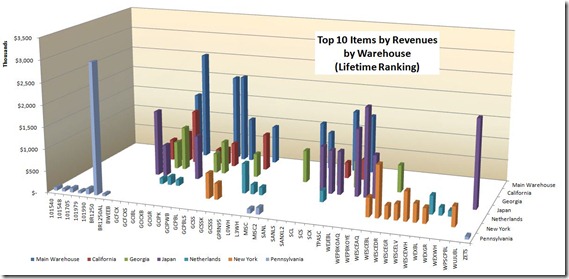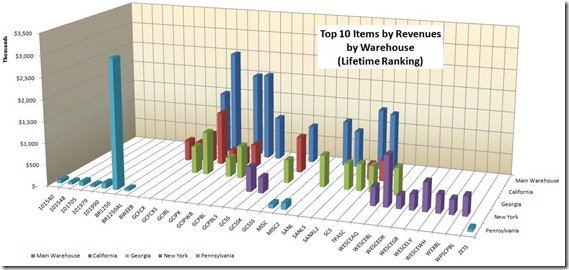W. Edwards Deming, a man with keen insights, once said, “Without theory, there is no knowing.”
Think about that.
The statement is true if we assume "knowing" requires to be in possession of something beyond a mere catalog of facts.
Consider the differences between “data” (a catalog of facts) and “information” (pertinent and timely data easily assimilated for accurate decision-making).
A man being chased across a mountain meadow by an angry bear may have accumulated a plethora of data about bears over the years. He may be carrying about in his head all manner of data about bears: their size, their weight, their habitats, their dietary intake, and more.
What the man being pursued by the bear anxiously wants to do at this breathless moment is to turn some of the data he possesses into information—that is, bring the appropriate data to mind so that he can assimilate it for rapid and accurate decision-making. He’d like to consider pertinent data along the lines of 1) how fast a bear can run, 2) how long they can keep up that pace, and 3) whether a full-grown bear can climb trees. He would like to use these data to make some decisions about action he might take under present circumstances.
However, in addition to these data being transformed into information, the man must also have “a theory”—a framework—into and against which to cast the information available to him. His theoretical framework might be somewhat along these lines:
-
I am confident that adult bears are not good tree-climbers
-
I also know that an adult bear may be able to reach up to 13 feet above the ground
-
I see a tree not far ahead that appears to be one that I could easily climb
-
I believe I can successfully—and rapidly—climb that tree to a height of at least 15 feet
-
Therefore… (choice of action)
In business it is just the same
In business, we actually must do precisely these same things. We must…
- Take the data we have available
- Place that data in the context of our present circumstances so that we can begin to isolate what is pertinent from what is not and produce “information”
- Then cast that information against a theoretical framework in order to turn it into knowledge for decision-making
Here is an example
Most ERP (enterprise resource planning) systems provide nearly endless data about inventory, for example. Yet many firms never get much beyond using that data for essential daily activities such as replenishment or valuing their assets in inventory.
Let’s look at a simple way to take a next step.
The chart above was produced using Microsoft Excel’s ability to assimilate data directly from SQL Server and create pivot tables and pivot charts. This chart is displaying the top ten ranked items (by sales revenue) for each of the firm’s warehouses.
What jumps out at even the most casual observer is that there is very little commonality in the top ten items across warehouses.
Well, we can see that there are two international warehouses involved: one in Japan and one in the Netherlands. I think we can assume that localized differences might account for different items being top-sellers in these nations on opposite sides of the globe.
Using Excel’s pivot data filtering capabilities, it is only a couple of mouse-clicks to eliminate these from our chart. The following chart is the result.
Note that we have also asked Excel to insert gridlines in order to make it easier to follow the product IDs across the chart.
We can immediately see a pattern that may be startling to some managers and executives in this firm who have never looked at their data in this way before. For example, top-product sales out of the Pennsylvania and New York warehouses have almost nothing in common with the rest of the operations.
Turning information into knowledge through theory
The next steps for managers and executives require a bit more subtlety. Theories need to be developed regarding these differences.
Some theories may be very straightforward and require no further action. For example: “Items in Product Line ‘A’ are produced to customer specifications and sold only to Customer ‘N’ out of the Pennsylvania warehouse.”
However, other theories may evolve as “tribal knowledge” is unlocked during ensuing discussions. These new theories may lead to taking actions that will open up entirely new markets for products that are leaders in the New York market, but have not been introduced (or, well-introduced) into markets served from Georgia or California.
Such a new view of the firm’s data offers managers and executives the opportunity reassess how, why, when and where sales are being made—or, not made—in order to cast new theories about how new markets might be opened up or existing markets expanded.
“Why aren’t top-selling products in California and Georgia selling well—or, at all—in Pennsylvania or New York? What can we do to leverage what we know about the success of these products in some markets in order to create new successes in other markets?”
Like picking the appropriate tree and climbing it—based on data transformed into information, and information cast against theory—it is possible that your firm’s very future may be determined by how you use the data you are already paying to collect and store.
We can show you how to better employ the data you already have, and frequently, doing so does not take expensive new business intelligence software to discover new insights into what is driving the success—or, lack of success—in your business enterprise.
The goal of this article—and subsequent related articles—is to show how clients can leverage tools they already have in their possession (e.g., Microsoft Excel, Sage 500’s Business Insights Explorer and Business Insights Analyzer) to aid in turning ERP data into information. In many cases, no expensive business intelligence tool is required to achieve rapid return-on-investment (ROI).
If your firm would like assistance with taking a low-cost approach to unlocking tribal knowledge and turning data into information, please contact us immediately.
Contact RKL eSolutions with your request by clicking here.





